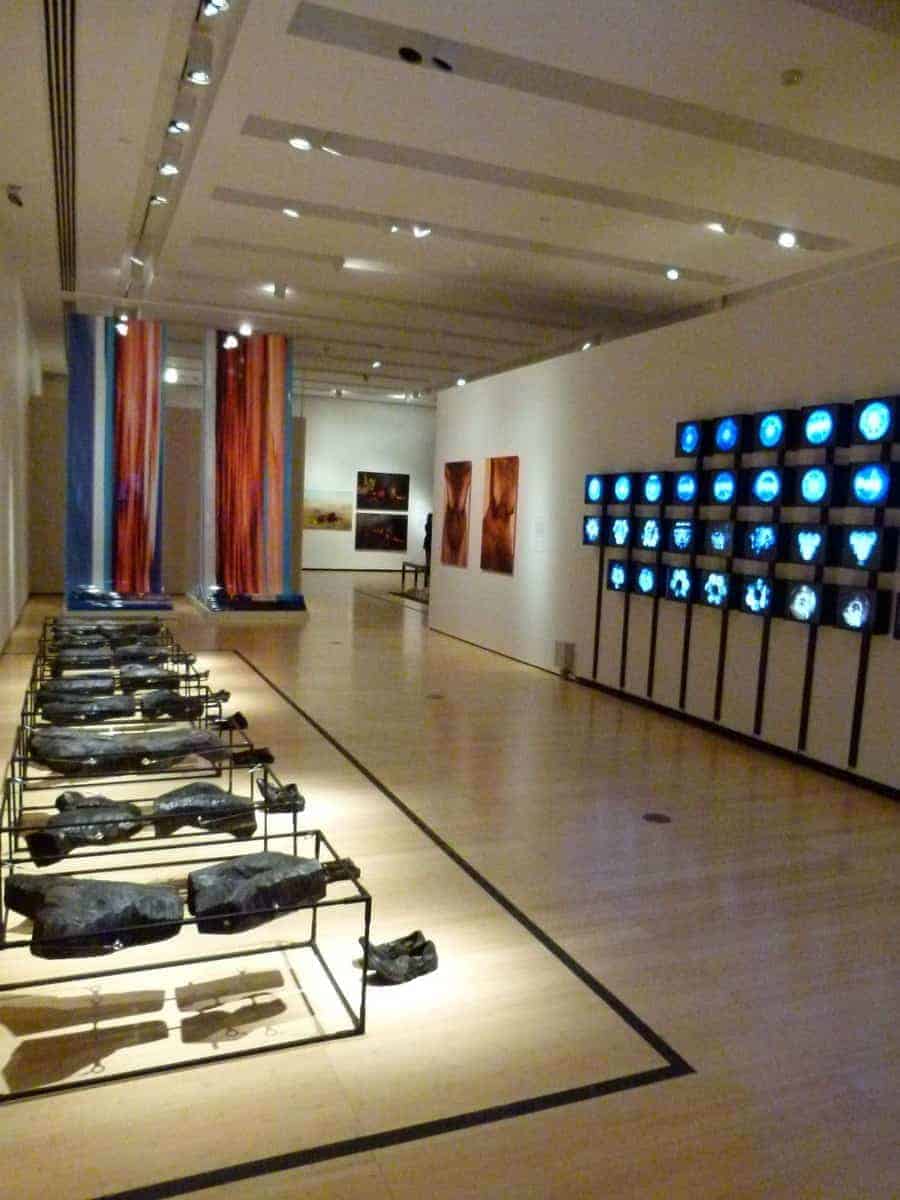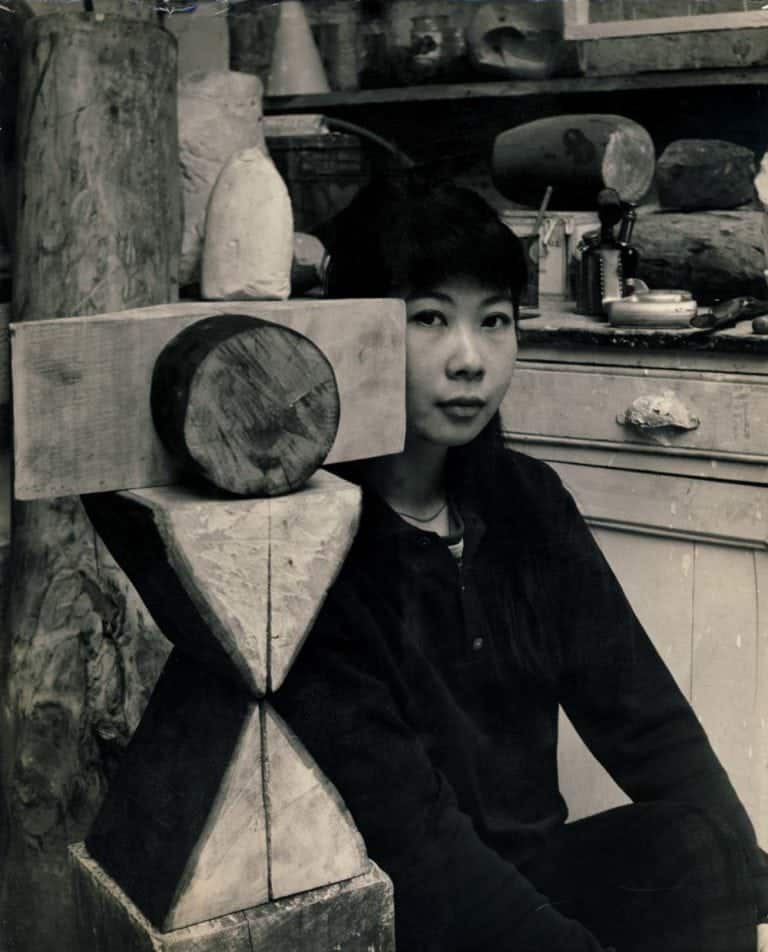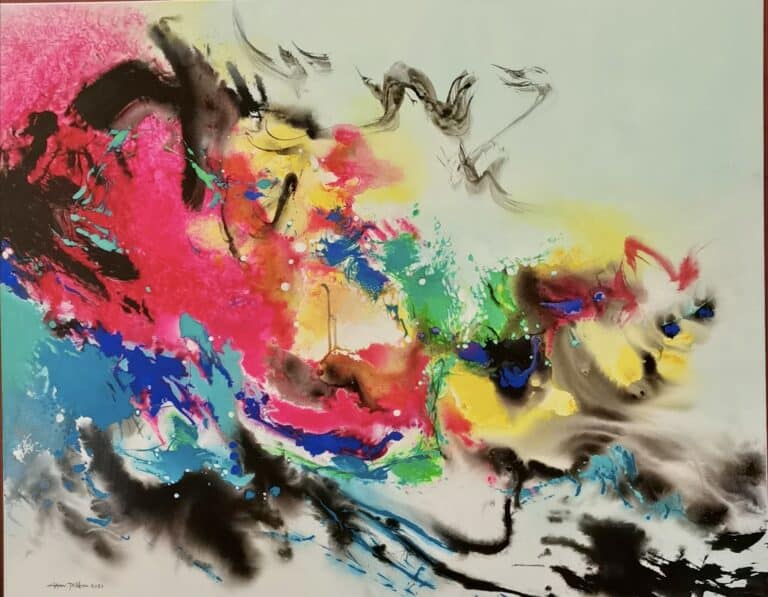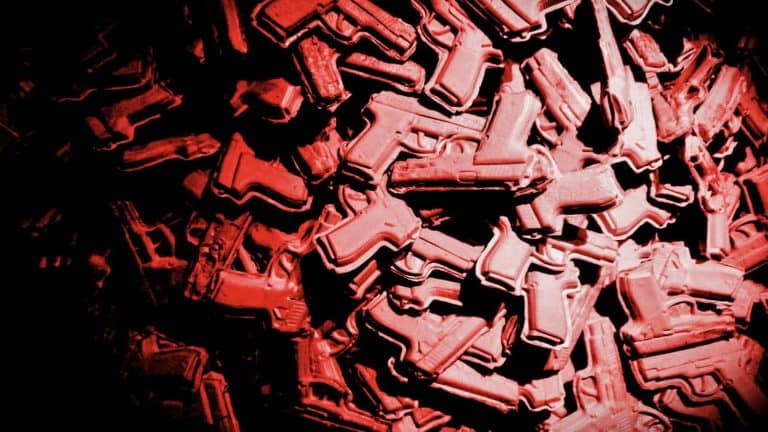After Darkness: Southeast Asian Art in the Wake of History, which opened at the Asia Society in New York on 8 September 2017, exhibits the works of seven artists and one artist group from three Southeast Asian nation-states: Indonesia, Myanmar and Vietnam.
Each of these nation-states has suffered a traumatic political past. The participating artists vary in life experience and generation – some lived the trauma, while others are diasporic. Their experience impacts the activism of each and whether their work looks back or is more rooted in the present.
Museum Director Boon Hui Tan and Michelle Yun, in their catalogue essay The Perils and Promises of Art in Post-Transition Societies, frame the issue as whether the world changes art or art changes the world.
What a treat it was for me to find that this exhibition engages both intellect and emotion and broadened my understanding of history in a region where I spent many years and which continues to hold many fond memories.
For myself and many Americans, the politically turbulent summer of 2017 has been challenging. My hunch is that this exhibition will resonate all the more because of its timing. The opening of the show coincided with the airing of Ken Burns’ & Lynn Novick’s 18-hour documentary series, The Vietnam War, on television. Speaking about the series on Charlie Rose, Lynn Novick said, “Vietnam is unfinished business in American history”. The works by artists Dinh Q. Le and Nguyen Thi Thanh Mai discussed below may help facilitate the necessary conversation in order to move history forward. Timothy Snyder, whose book, On Tyranny: Twenty Lessons from the Twentieth Century, was released earlier this year, says that “when political leaders set a negative example, professional commitments to just practice become more important.”
Given the negative tone of American politics today, artists are, in my view, as important as lawyers and judges in articulating truth and the works in the show speak important and timely truths, both to their own peoples, as well as to the people of America.

I viewed the works as dividing roughly into those that looked back to historic events and those that are more fixed in the present.
One of the most striking works in the first group is that by Myanmar artist, Htein Lin, A Show of Hands. Htein Lin spent six years (1998 – 2004) in prison in Myanmar due to his political activism. The work consists of an installation of cast hands in surgical plaster, as well as a multimedia presentation.
At first glance, the repetition of multiple plaster cast hands on multiple levels is deceptively uniform. Looking closer, though, one realises that each hand is different and each one bears its own tag, identifying a political prisoner by name and stating his date of incarceration.
I felt chills run up my spine as I noted and recognized that there was a story behind each hand. The identity of the owner of each hand is restored.
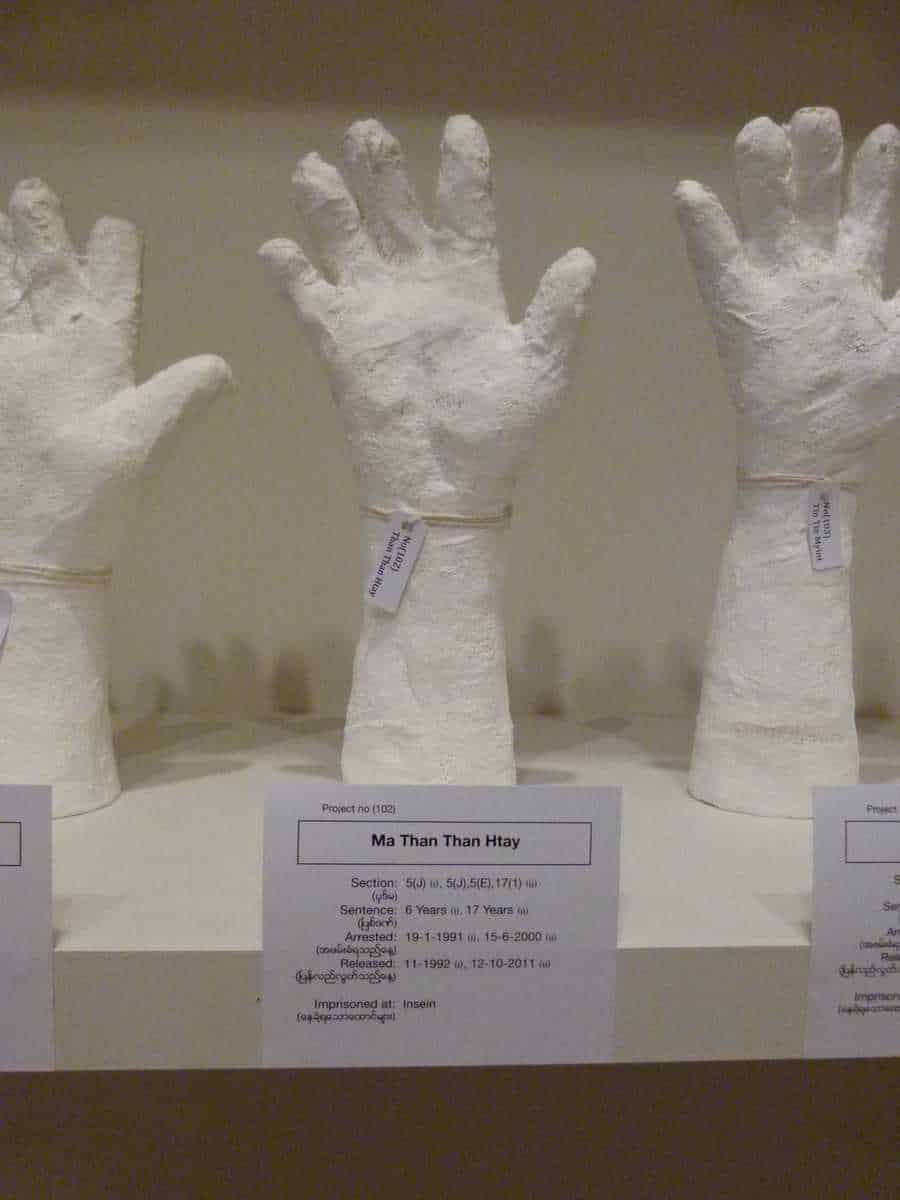
The video expands the connection of the viewer to the work as the subjects are seen chatting while the model of their hand is being made from life. This work highlights how imprisonment is used by regimes to deny free speech and dissent. It’s a powerful and moving work that casts light on a period of Myanmar history others would prefer to forget.
The artist was changed by his own experience as a political prisoner and responded with an artwork that speaks louder than words.
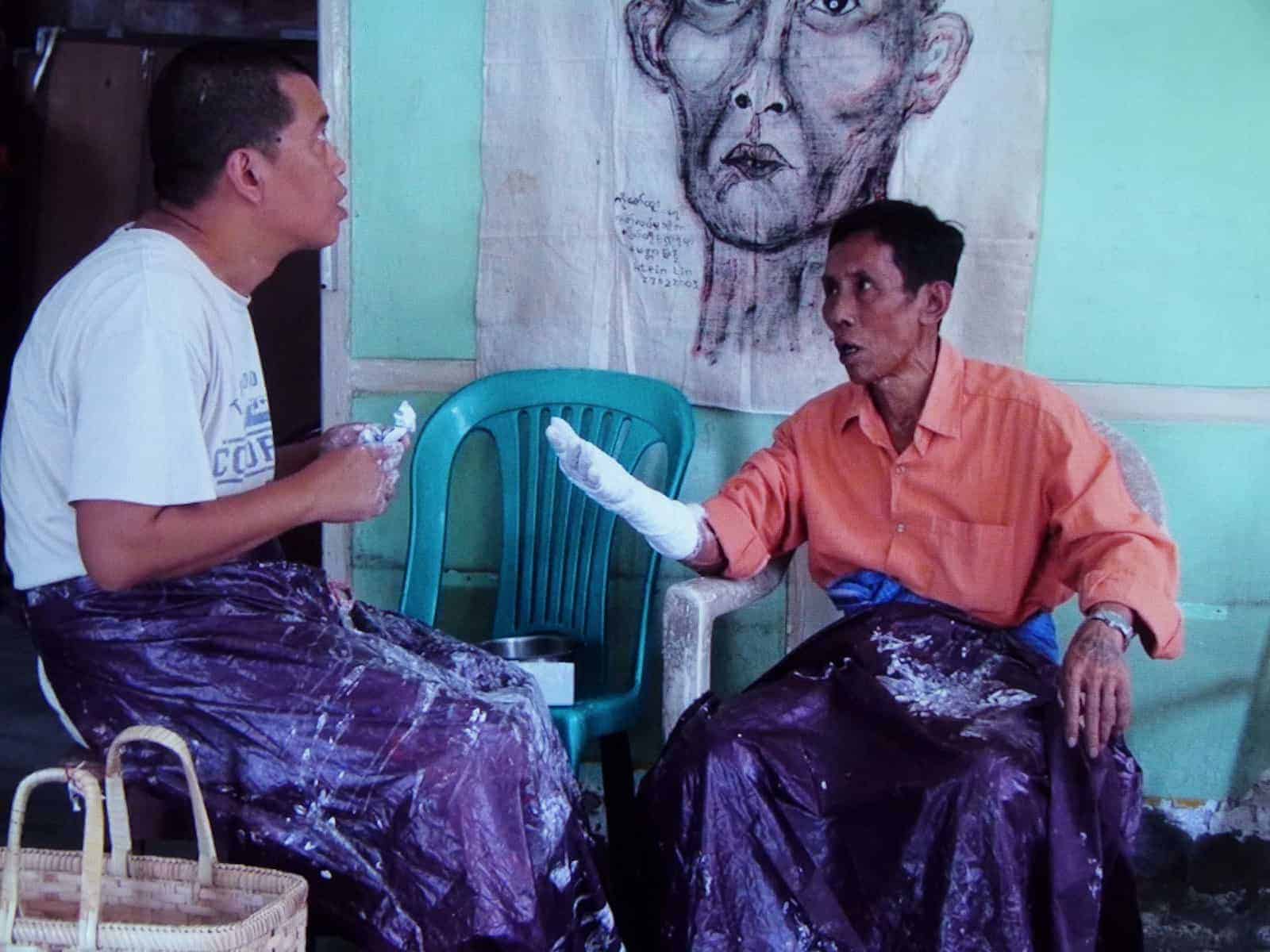
The works by Indonesian contemporary artist FX Harsono cast a spotlight on historical events and challenge the official narrative of Indonesian history.
Born in 1949, this artist remained in Indonesia and has been an eyewitness to much of Indonesia’s political history. The transition of power in Indonesia in the 1960s, from its first President, Sukarno, to General Suharto, was marked by violence, mass killings, and a strong military presence. Suharto’s New Order made economic development its main focus and succeeded in increasing export manufacturing, thereby meeting the aspirations of its citizens.
One cost, however, was the loss of political freedom. In the Asian Economic Crisis of the 1990s, these policies failed and Suharto resigned – but not without violence.
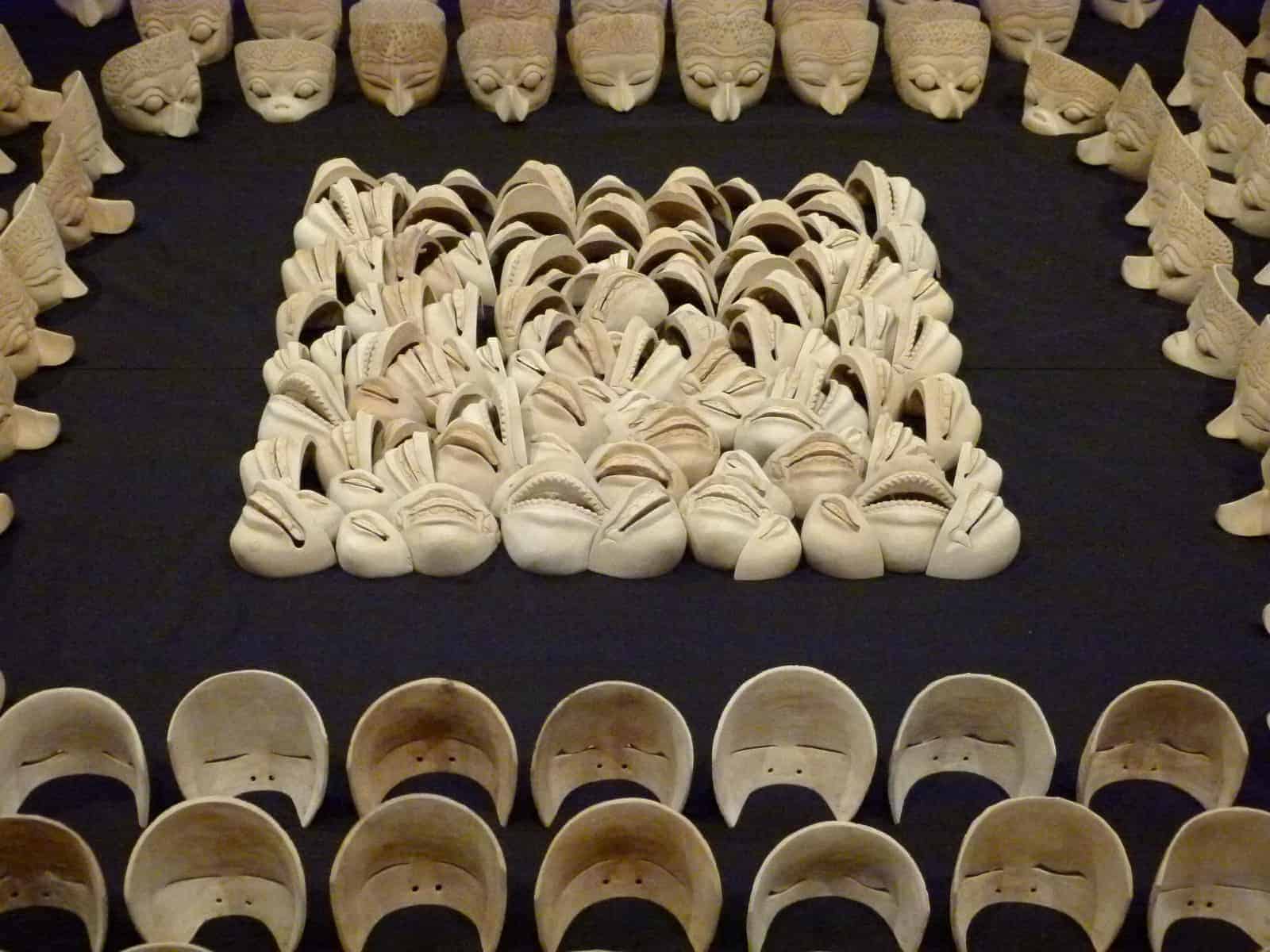
The Voices are Controlled by the Powers is a protest against the lack of freedom of speech at the end of the New Order. In this installation of traditional masks, the lower part of the face, with mouth and jaw, has been sawn off and separated from the rest of the face.
In another of Harsono’s works, Burned Victims, the artist draws the viewer into the traumatic event of the burning alive of victims trapped in a shopping centre during a violent protest in 1998. The charred, wooden torsos and the burned shoes placed at the foot of each figure symbolise the victims and starkly emphasise the horror of the event.
Harsono, as stated in the aforementioned catalogue essay by Boon Hui Tan and Michelle Yun, questions Suharto’s role in the turmoil and violence that targetted ethnic Chinese Indonesians.

In a more recent 2011 performance piece, Writing in the Rain, the artist questions the denial of his Chinese heritage as part of Indonesia’s political process. He writes his name over and over again in Chinese ink on a pane of glass, but a continuous shower of water obliterates the writing and renders his efforts futile.
Harsono gives voices to those denied in the past. His leadership in the arts and his artistic practice over decades gives this artist a recognition as a trustworthy voice.
The last work I mention with this emphasis on “looking back” at events of the past is by Dinh Q. Le from Vietnam, who seeks to use the lens of memory and time to provide new details that facilitate constructive conversations. Though raised in the USA, the artist returned to Vietnam. The focus of this work is the war years. In Light and Belief: Sketches of Life from the Vietnam War, 70 sketches in pen, pencil and watercolour illustrate the everyday life of soldiers from North Vietnam during the American Vietnam War.
These found sketches were made by embedded artists who accompanied the soldiers during the war and the accompanying video includes conversations with some of that group. I found the warmth of the portraits and the normalcy of the activities presented do much to show the humanity of the individual soldier.

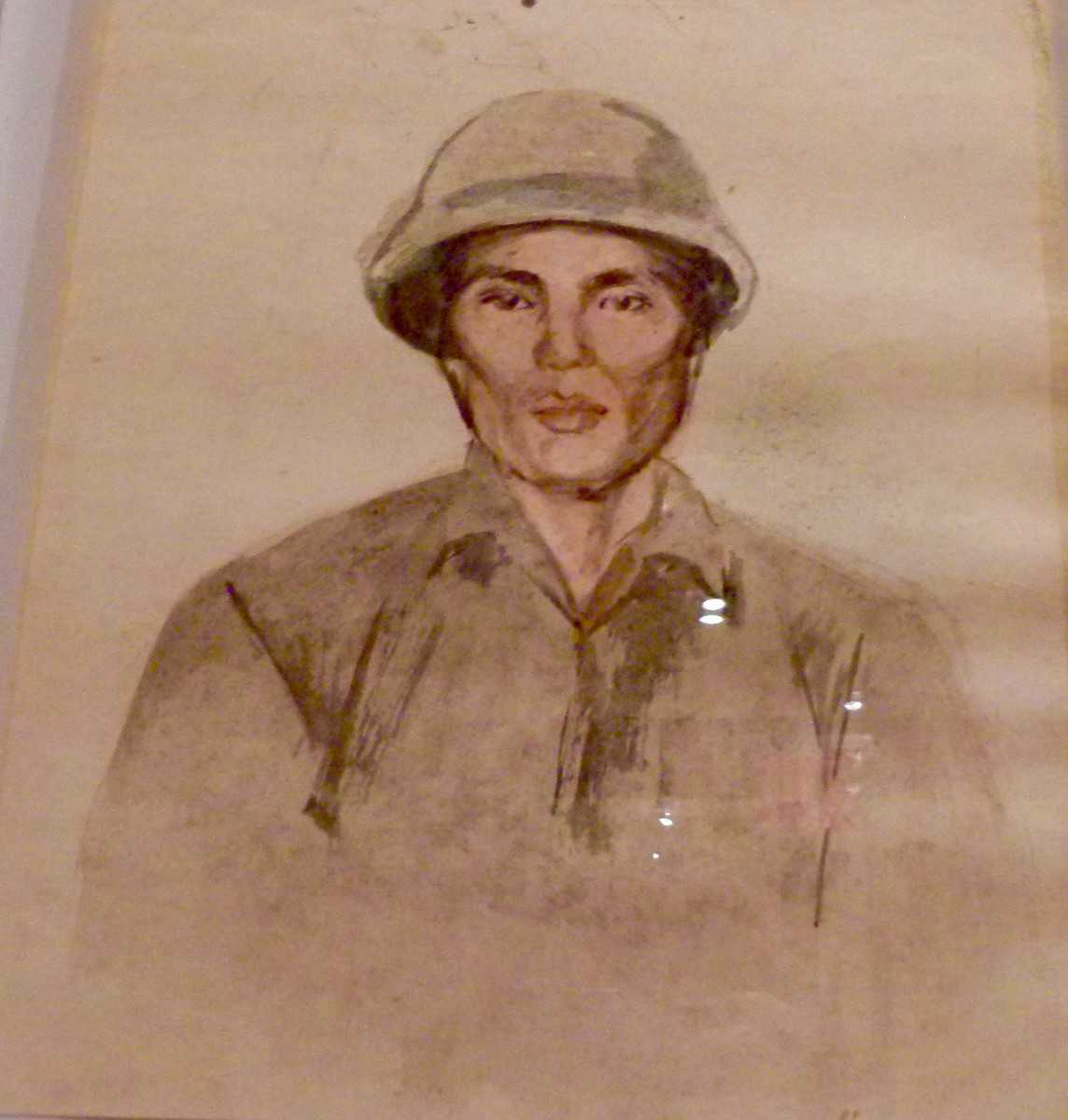
Diasporic artists and/or those of a different generation are no less engaged in activism. Their works may be more rooted in the present, but many carry warnings within.
This group seems to be seeking to both change the world and reflect present real-time concerns. For example, Vietnam’s Nguyen Thi Thanh Mai’s Travels is an installation consisting of a hut decorated with photographic images where the face of a refugee is placed on an aspirational figure such as a well-dressed woman or man. I found this pictorial presentation of aspiration and hope particularly moving.
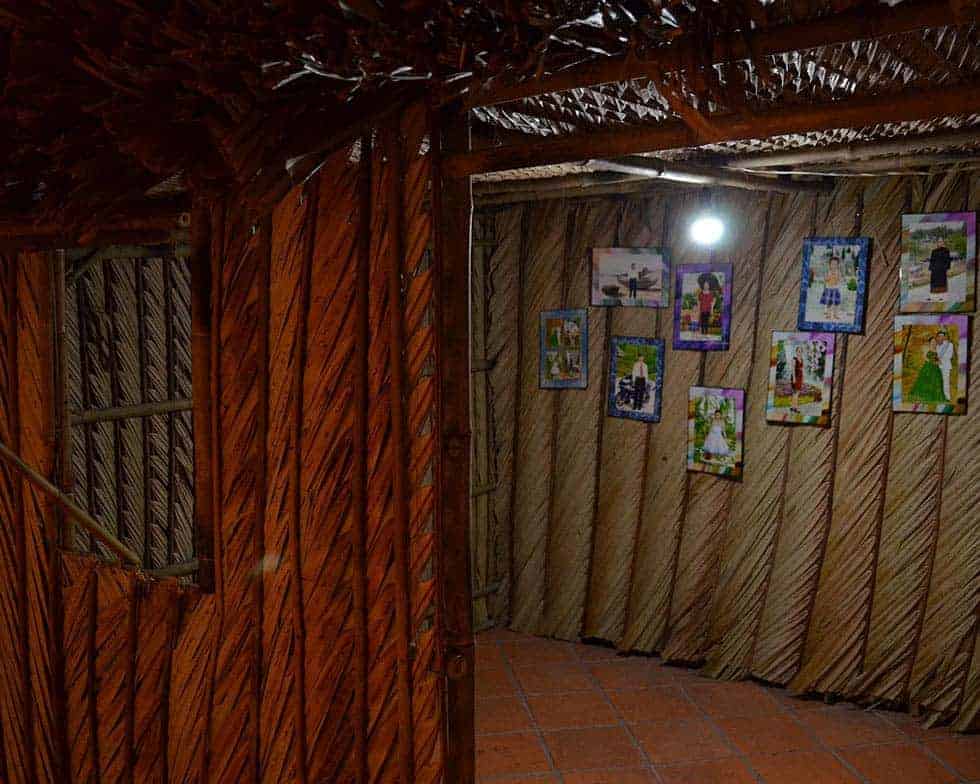
On a more sombre note, The Guerrillas of Cu Chi, from The Propeller Group, juxtaposes two videos of the Cu Chi tunnels created by the North Vietnamese. One video was made by the North Vietnamese to show the importance of the tunnels to the effort to defeat the Americans and South Vietnamese. The other video shows the tunnels as they are today, a tourist attraction where, for a few dollars, a visitor can visit the tunnels and fire guns. The message of the danger of making war a tourist commodity and trivial is clear.
I have not been able to include all the artists and works in this exhibition, but I have tried to select those works that indicate particularly well the strength of the exhibition and its timeliness.
This viewer and others, I am certain, will find themselves agreeing with Timothy Snyder – history doesn’t repeat itself but it does instruct. These artists and works all share a similar power and direction that will resonate throughout their cultures and, who knows, may change the world.
